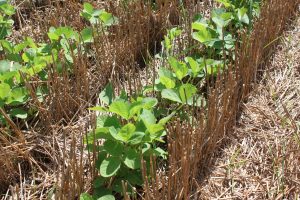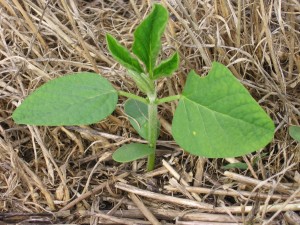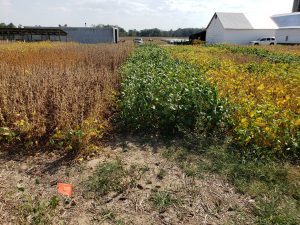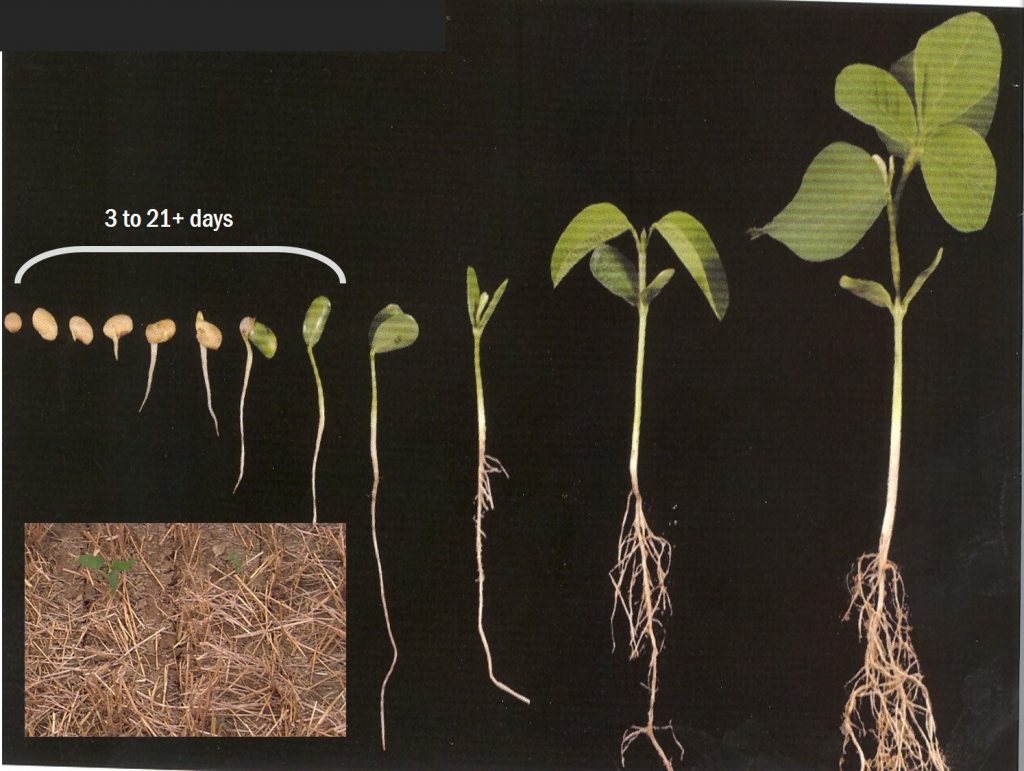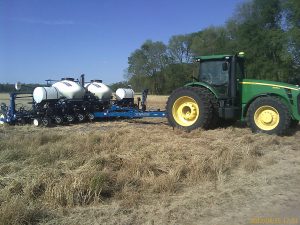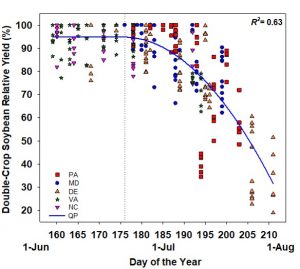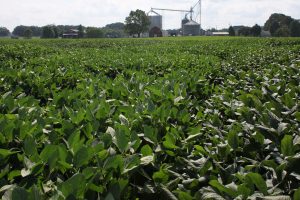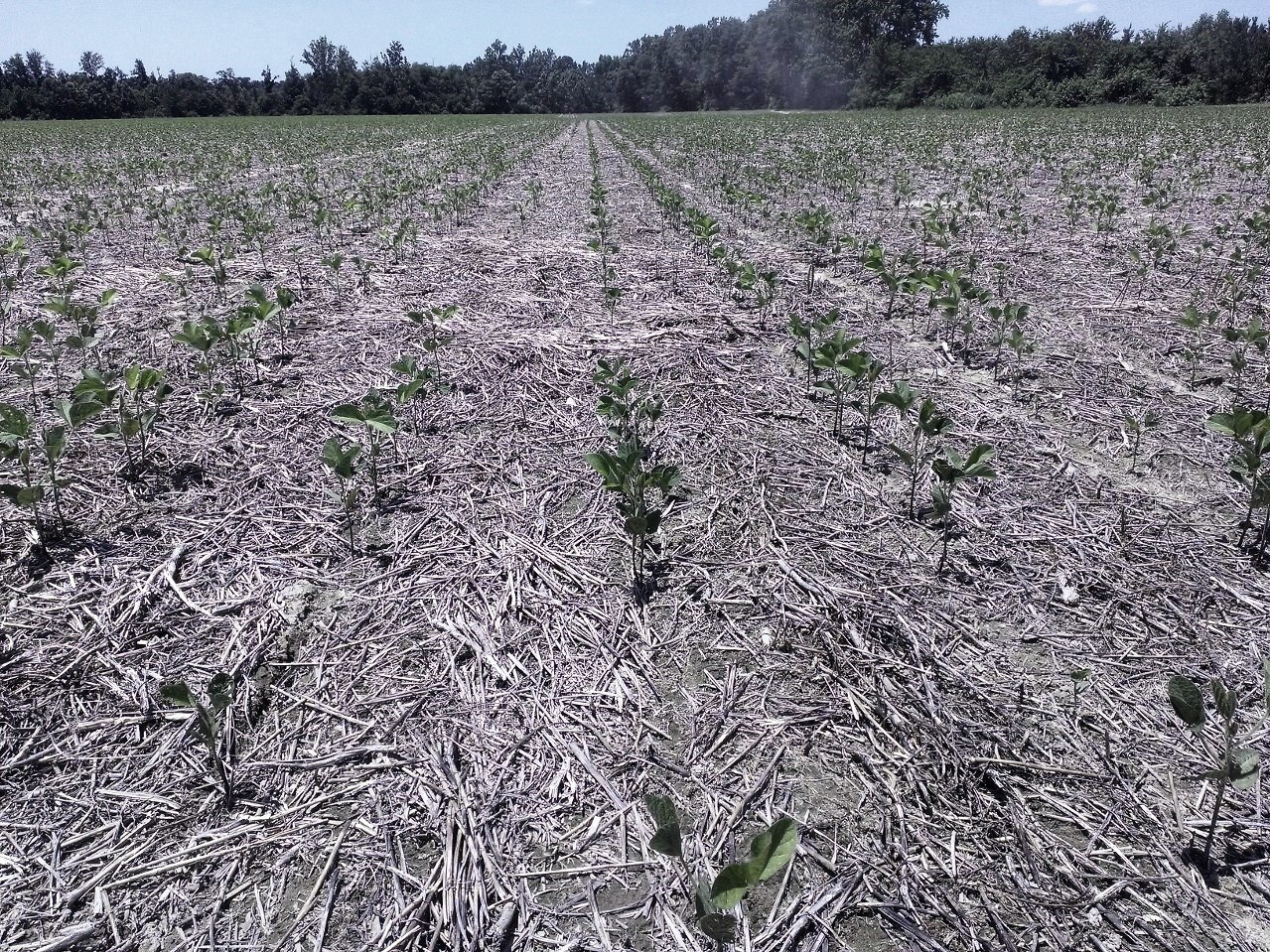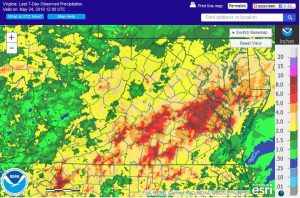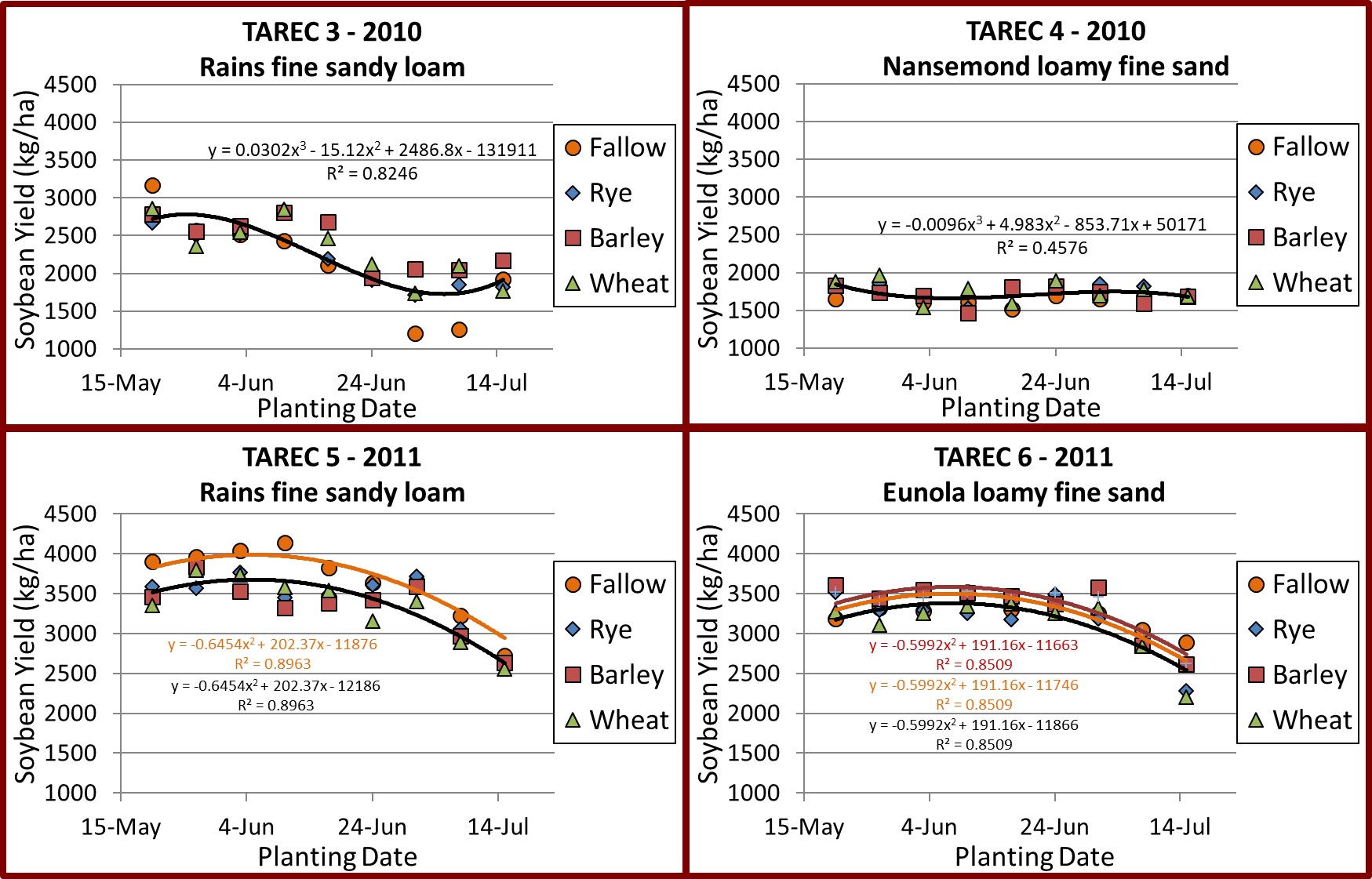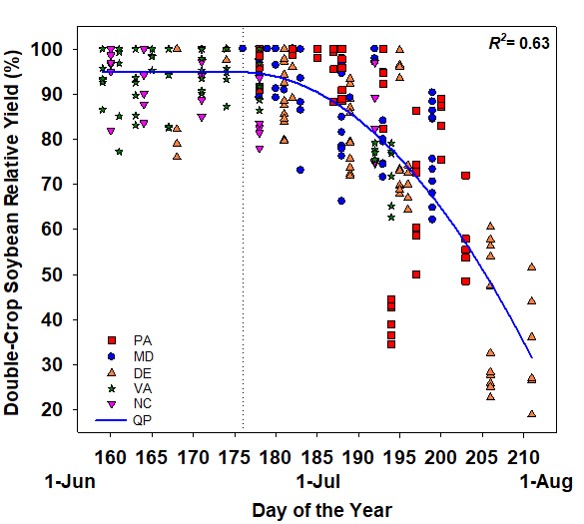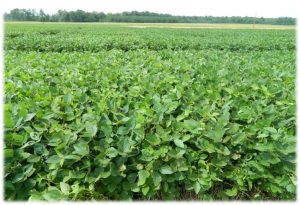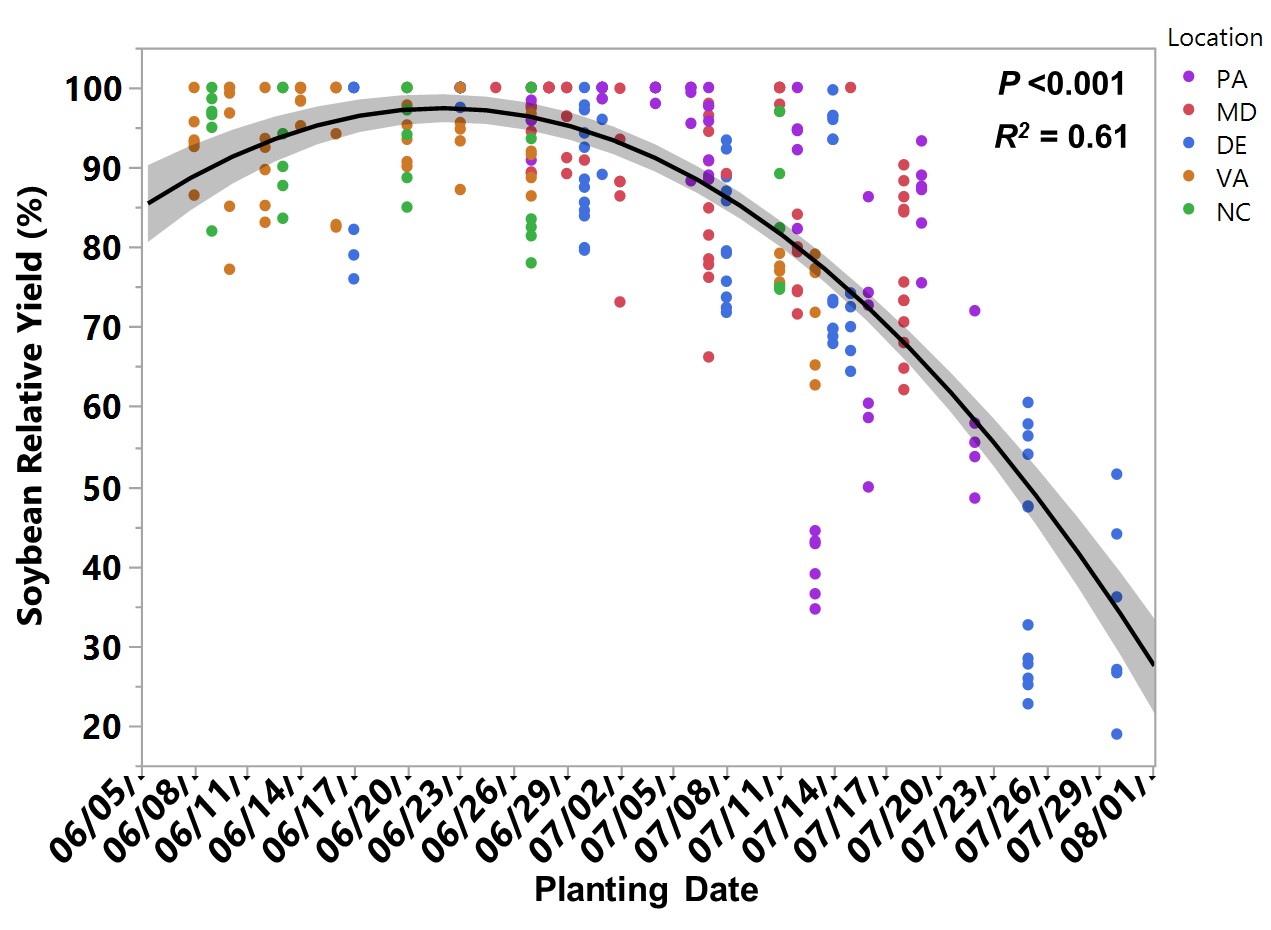Until these big high-pressure systems sitting in the eastern part of the country move east, it looks as if we are in for another week or so of dry weather. This is not good for soybean planting, any way you look at it. So, what should we do?

There are basically three options:
Plant shallow in dry soil and hope for enough rain to get the seed out of the ground. If you decide to take this approach, you want to ensure you achieve uniform seed depth and that you are not allowing the seed access to moisture below the seed that could lead to variable emergence. This approach would be less risky in clean-tilled situation where you are more confident that you have dried the soil out at shallow depths. Soybean seed will sit in the ground for several weeks and still emerge well when rainfall occurs. Some worry about “cooking” the seed during this period. Although it is true that the seed will continue to respire and its ability to germinate will decline, the bigger risk is that you catch a small rain that allows the soybean seed to imbibe water but not enough to get it out of the ground.
Caution must be exercised in no-till systems. With no-till the soil has not been uniformly dried out with tillage; therefore, there is non-uniform moisture distribution across the field. This leads to uneven access to moisture and ultimately emergence variability. Parts of the field will have adequate moisture to get the soybeans out of the ground, other parts will be completely dry as in tilled conditions, and much of the field will be in between. Those in-between areas are likely to have enough moisture to swell the seed and/or initiate germination but not have enough moisture to allow the seedling to emerge. This is my least favorite option.
Plant deep to the moisture. Under most conditions, soybeans may be planted 0.75 to 1.5 inches deep. But I don’t usually like to go much over 1 inch deep, especially in May. I want soybean to come out of the ground as fast as possible. With that said, we planted some at 1.5 inches last week. Soil temperatures are generally high enough right now for the seed to germinate and plants emerge relatively quickly. Soybeans should not be planted deeper than 2 inches. Many are not finding soil moisture at less than 2 inches. Even if there is moisture 1.5 inches down, exercise caution using this approach, especially your soils are prone to crusting, because a heavy rainfall could seal the soil before the soybeans emerge. In tilled conditions, the planter can push the soil down a little, creating a ridge of fluffy soil on each side. A heavy rain will cause this soil to move into that furrow and possibly add another ½ to 1 inches of soil to your depth. If you are going to go this route, check the emergence score on the variety.
Keep the seed in the bag until the next time we catch rain. This is the safest approach and the one that I am leaning to now. Based on historical data, we have another couple of weeks before we start seeing yield declines from delayed planting. Data from recent research throughout the Mid-Atlantic shows that each day delay in planting past mid-June can result in a ½ bu/A or more yield loss and in general these yield declines begin in the second or third week of June. We still have some time before we get to that point. The optimum planting date range for soybeans is late-April through mid-June, although it will vary from year-to-year and field-to-field based on rainfall, soil water holding capacity, and soybean maturity, but the goal is to get the soybean plants to lap the middles before reproductive growth begins. We still have still have time to do this in most cases.

Waiting to plant is more of a concern for those who still have early-maturing varieties to plant (MG 3 and early-4), as these varieties will have less time for vegetative growth. I do suggest planting your earliest maturity groups first, whichever strategy you choose to employ. Later maturity groups have more time for adequate growth when planting is delayed.
What about fungicide seed treatments? You have likely already decided on this and cannot change. But fungicidal seed treatments are less likely needed in this situation where soils are warm. It looks as if temperatures will be warming all week, so I don’t see cold soils as a problem.
Whatever decision a grower makes, uniform seed placement in critical to achieve uniform emergence and ensure each seed has as equal of access to water as possible. I don’t get too concerned if some plants emerge just a few days apart, but we don’t need them emerging a week apart. Dr. Rachel Vann of N.C. State discussed the importance of uneven and delayed emergence in soybeans – How Important Is Uniform Emergence in Soybeans? Still, keep in mind that although earlier emerging plants will usually yield more, the late emerging plant will still contribute to yield. Due to soybean’s compensatory ability, the yield on the whole will differ little from only a few days difference in soybean emergence within the row. If you know me, you know that I’m not a fan of planting with drills due to lack of equal spacing within the row. This lack of even spacing will become increasingly important if plant emergence is not good.
In conclusion, there are advantages and disadvantages to each planting option discussed, but we still have time to plant soybeans in our region before we see drastic yield declines. All options discussed will likely result in delayed emergence due to environmental conditions.

